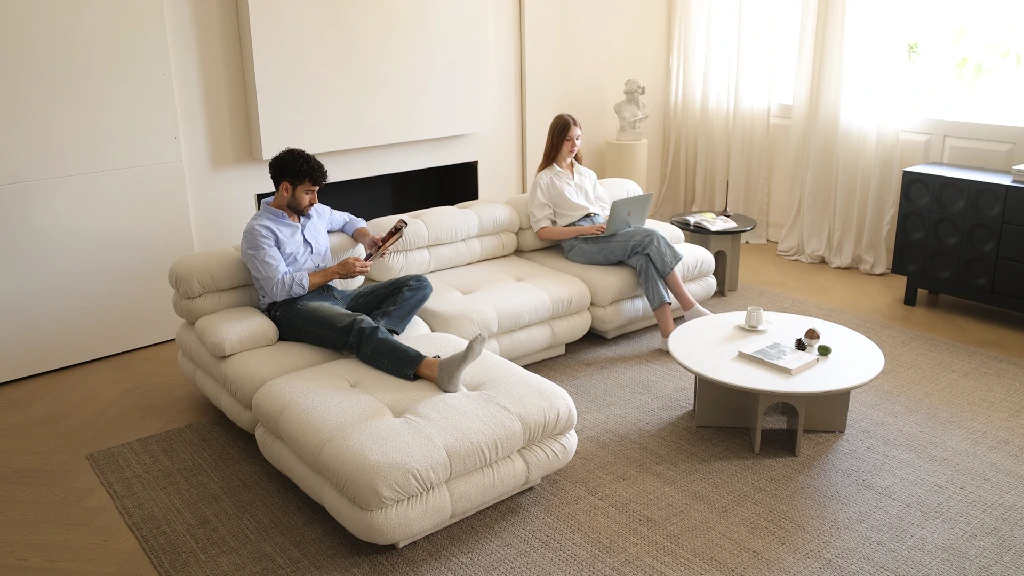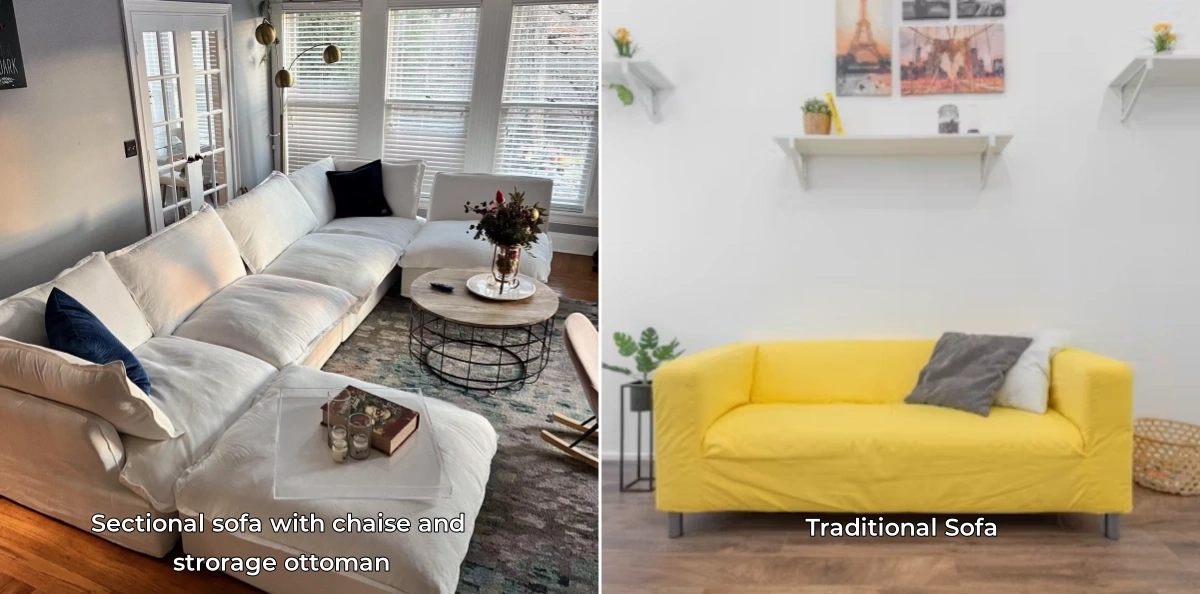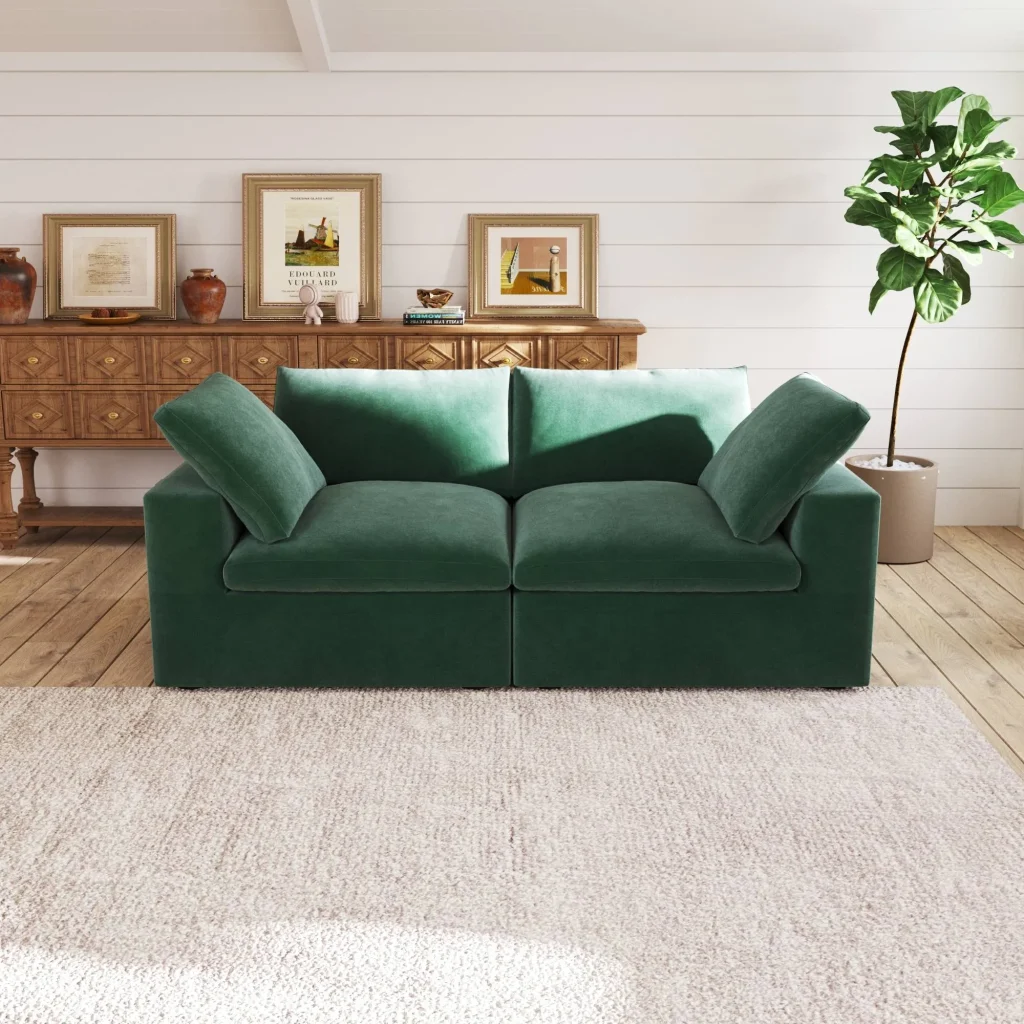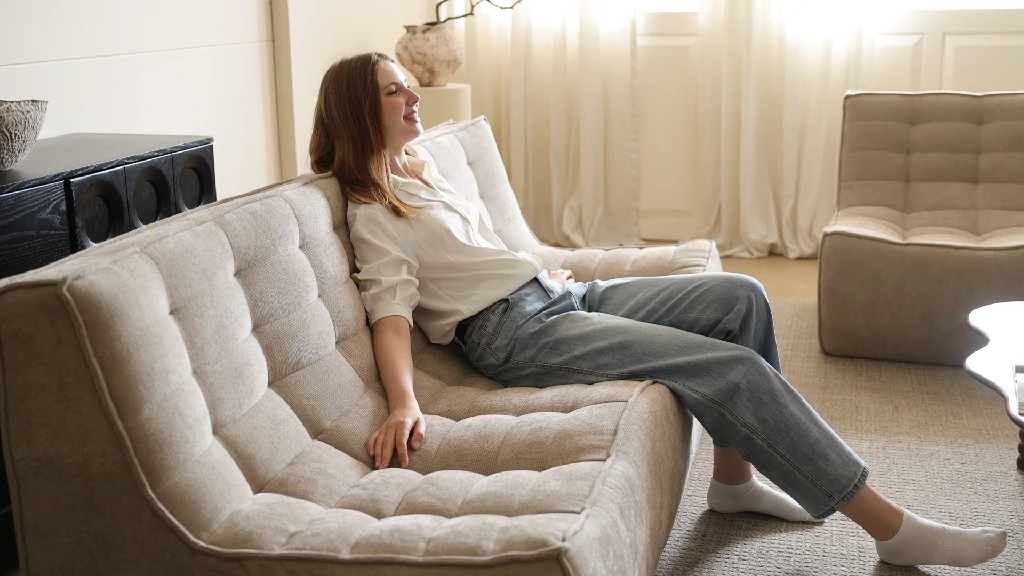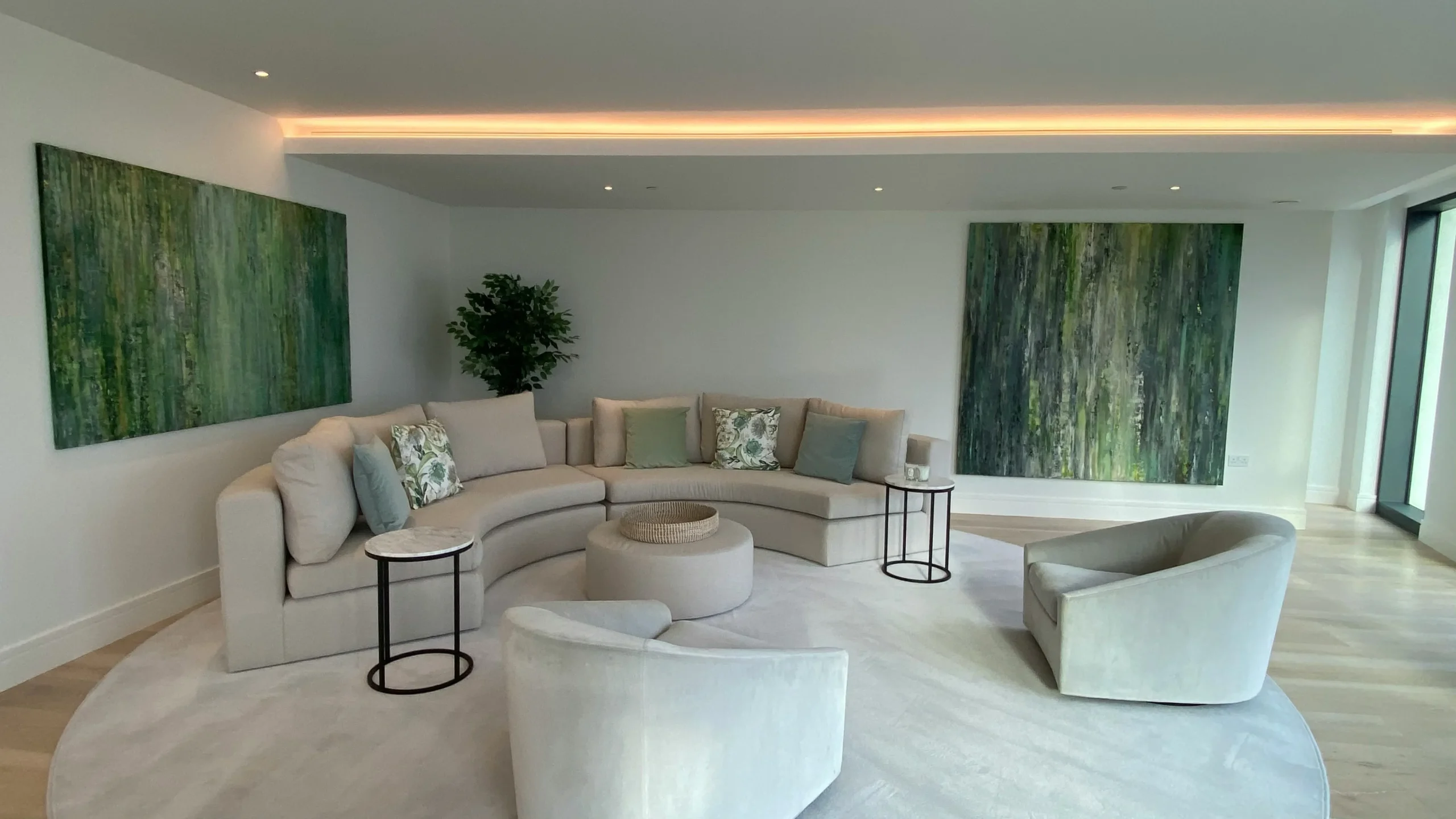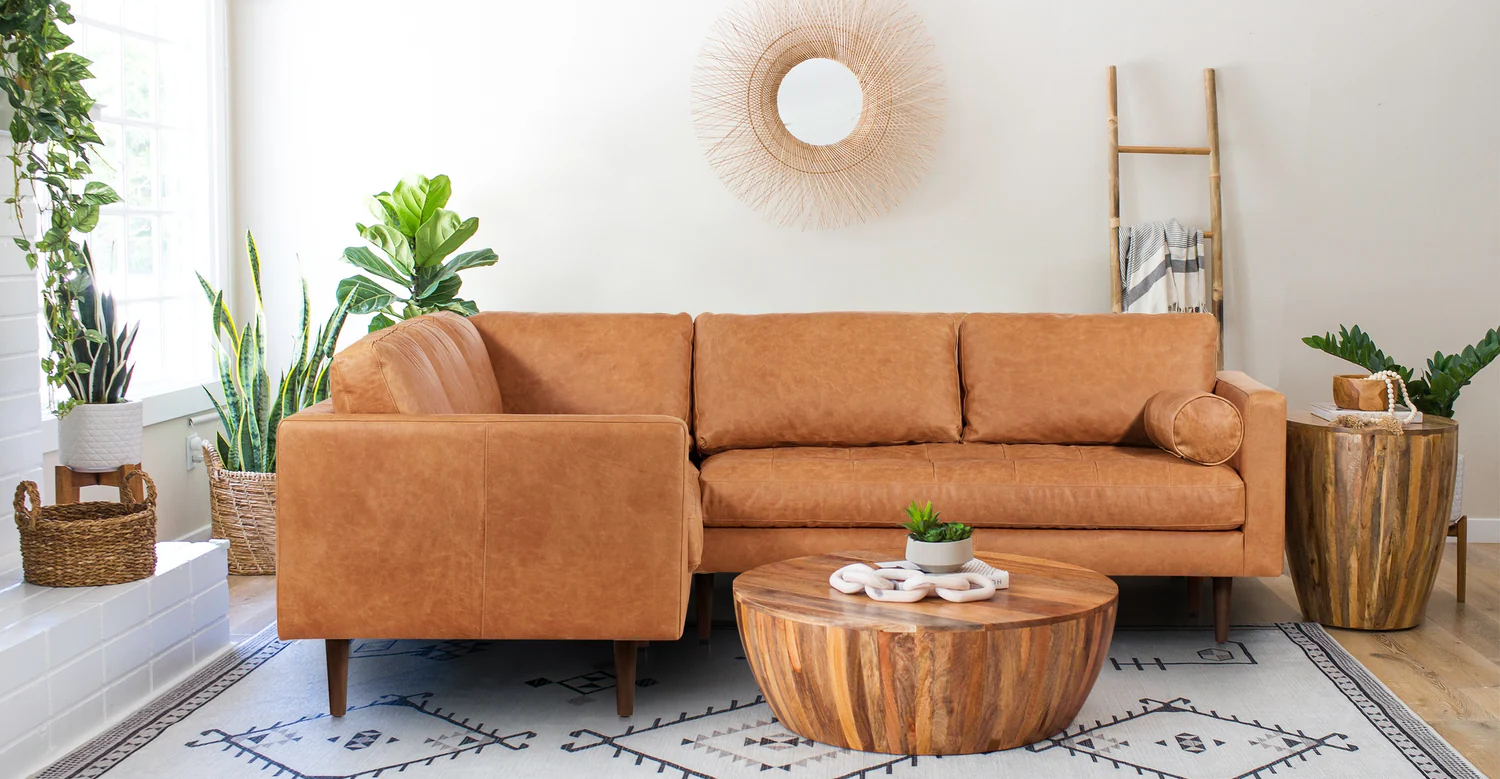Have you ever wondered which sofa is the best fit for your home—a modular sofa or a traditional one? Choosing the right sofa can feel tricky because it’s more than just a piece of furniture. It’s the heart of your living room where you relax, spend time with family, and welcome guests. The decision often comes down to two main options: modular sofas and traditional sofas. In this guide, we’ll look at how they compare in flexibility, comfort, and style, so you can find the one that matches your lifestyle best.
Modular Sofa vs Traditional Sofa: Which One Is Right for You?
What Is a Modular Sofa?
A modular sofa is a sofa made up of separate pieces, often called sections or modules. These pieces can be arranged in different ways to fit your space.
Definition and Key Features
Unlike a fixed sofa, a modular sofa lets you move sections around. You can add or remove parts to match the size of your room. It’s flexible and easy to change.
How Modular Sofas Are Designed for Flexibility
The design is all about choice. You can turn a few sections into a cozy two-seater or spread them out into a large sofa for family gatherings. Some designs even include chaise lounges or corner pieces.
Popular Setups and Layouts
Common layouts include L-shapes, U-shapes, or simple straight lines. Many people like them because they can switch the setup when moving to a new home or when they want a fresh look.
What Is a Traditional Sofa?
A traditional sofa is the classic couch found in many homes. It is one solid piece of furniture with a fixed shape.
Definition and Key Features
Traditional sofas have a strong frame and a design that does not change. Most seat two to four people. They are simple, steady, and made for everyday comfort.
Fixed Design and Limited Arrangement Options
Unlike modular sofas, a traditional sofa cannot be taken apart. You can’t rearrange or add extra sections. The look and size stay the same, which can be harder to fit into new spaces or layouts.
Common Types of Traditional Sofas
The most common types are two-seaters and three-seaters. Some bigger ones come as fixed sectionals. Other popular styles include Chesterfields, loveseats, and recliners. These are loved for their classic look and cozy feel.
Key Differences Between Modular and Traditional Sofas
When choosing between a modular sofa and a traditional sofa, it helps to look at the key differences. Both can be great, but they fit different needs. Here’s how they compare in the main areas.
Flexibility and Layout Options
A modular sofa gives you the freedom to rearrange the pieces however you like. You can make it bigger for a party or smaller for a cozy night. You can even move sections around to fit a new room. A traditional sofa has a fixed shape. Once you buy it, the layout stays the same, which can be limiting if your space or needs change.
Comfort and Functionality
Modular sofas often have deep seats and adjustable designs. You can create a lounge-style setup or a simple straight sofa. They are great if you like both comfort and choice. Traditional sofas offer steady comfort with a classic look, but they don’t adapt as much to different needs.
Style and Aesthetic Appeal
Modular sofas fit well with modern and minimalist homes. You can pick colors, fabrics, and layouts that match your taste. They feel fresh and easy to customize. Traditional sofas bring timeless style. They are elegant and cozy, but they don’t offer the same level of change or personalization.
Durability and Longevity
With modular sofas, you can replace a single section if one gets worn or damaged. This makes them last longer and saves money over time. Traditional sofas are harder to fix. If one part breaks or wears out, you often have to replace the whole sofa.
Maintenance and Cleaning
Modular sofas usually come with removable covers. This makes them easy to clean at home. You can wash the covers and keep your sofa looking fresh. Traditional sofas are harder to clean. In many cases, you may need professional cleaning, which can be costly and less convenient.
When a Modular Sofa Is the Better Choice
There are times when a modular sofa is the smarter pick over a traditional one. Here are a few situations where it really shines.
For Small Apartments or Changing Spaces
If you live in a small apartment, a modular sofa can fit perfectly. You can start with just a few pieces and add more later if you move into a bigger place. The ability to change the layout makes it easy to adapt to new rooms or floor plans.
For Families Who Need Extra Seating Flexibility
Families often need different seating setups. A modular sofa can grow with your needs. You can create a large sofa for movie nights or split the pieces into smaller sections when you want more open space. It’s a simple way to make your living room work for everyone.
For People Who Like Modern, Minimalist Interiors
A modular sofa also works well if you love a clean, modern look. Its straight lines and simple design fit perfectly in minimalist homes. You can choose neutral colors or soft fabrics to keep the style calm and uncluttered. Plus, the ability to customize makes it easy to match your personal taste.
When a Traditional Sofa May Still Work Best
While modular sofas are great for many homes, a traditional sofa can still be the right choice in some cases. Here’s when it may work best.
For Those Who Want a Classic, One-Piece Design
Some people like the feel of a sofa that comes as one solid piece. A traditional sofa gives that steady, all-in-one design. It feels complete and ready to use without the need to arrange parts.
For Formal Spaces Like Traditional Living Rooms
In more formal spaces, a traditional sofa often fits better. It gives a neat, polished look that works well in living rooms meant for guests or special occasions.
For Buyers Who Prefer Timeless Looks Over Flexibility
Traditional sofas bring a timeless charm. If you value a classic style that never goes out of fashion, this type is a good choice. It may not offer the same flexibility as a modular sofa, but it does give a look that stays elegant year after year.
Cost Comparison: Modular vs Traditional Sofas
Price is often a big factor when choosing a sofa. Both modular and traditional options come with costs to think about, not just when you buy them but also over time.
Upfront Investment vs Long-Term Savings
A modular sofa can cost more at the start. This is because you pay for separate sections and the option to expand later. But in the long run, it can save you money. Instead of buying a whole new sofa when your needs change, you can add or remove pieces. A traditional sofa is usually cheaper upfront. However, if it stops fitting your space or wears out, you may need to replace the entire piece.
Replacement and Repair Differences
Modular sofas make repairs easier. If one section gets damaged, you can replace just that part. This is often less expensive and more convenient. With traditional sofas, damage to one area can affect the whole piece. Fixing it can be costly, and in many cases, people end up buying a new sofa instead.
Pros and Cons Overview
Every sofa has its good and bad sides. Here’s a quick look at the pros and cons of modular sofas.
Pros of Modular Sofas
- Flexible design: You can change the layout anytime to fit your space or mood.
- Easy to move and clean: Smaller sections make it simple to carry and keep tidy.
- Replaceable sections: If one part wears out, you only need to swap that piece instead of the whole sofa.
Cons of Modular Sofas
- Can cost more upfront: Buying sections may feel more expensive at the start.
- May look too modern for classic spaces: The sleek design might not blend well in very traditional rooms.
Pros of Traditional Sofas
- Timeless design: A classic look that never goes out of style.
- Usually lower initial cost: Most traditional sofas are cheaper to buy at first.
Cons of Traditional Sofas
- Limited flexibility: You can’t move or change the shape once it’s set.
- Harder to clean and repair: Fixed covers and one-piece builds make upkeep more difficult.
Tips for Choosing the Right Sofa
Measure Your Space Carefully
Before you buy, check the size of your room. Measure the length, width, and doorways. A sofa that is too big can make the room feel cramped, while one that is too small may look out of place.
Think About Lifestyle and Family Needs
Your daily life matters when picking a sofa. If you have kids or pets, choose something durable and easy to clean. If you love hosting guests, a larger or modular sofa gives you more seating.
Consider Design Style and Future Flexibility
Pick a style that matches your home. A modular sofa works well if you like modern, flexible layouts. A traditional sofa fits if you prefer a timeless, classic look. Think about how your needs may change in the future.
Conclusion
Choosing between a modular sofa and a traditional sofa depends on your space, lifestyle, and taste. Traditional sofas bring a timeless look, but they stay fixed in shape. Modular sofas, on the other hand, give you freedom to rearrange, expand, or swap sections as life changes.
For many modern homes, modular sofas are the smarter pick. They fit small apartments, growing families, and anyone who loves clean, flexible design.
If you want comfort that grows with you, explore modular sofa options. They bring both style and long-lasting value to your living room.

